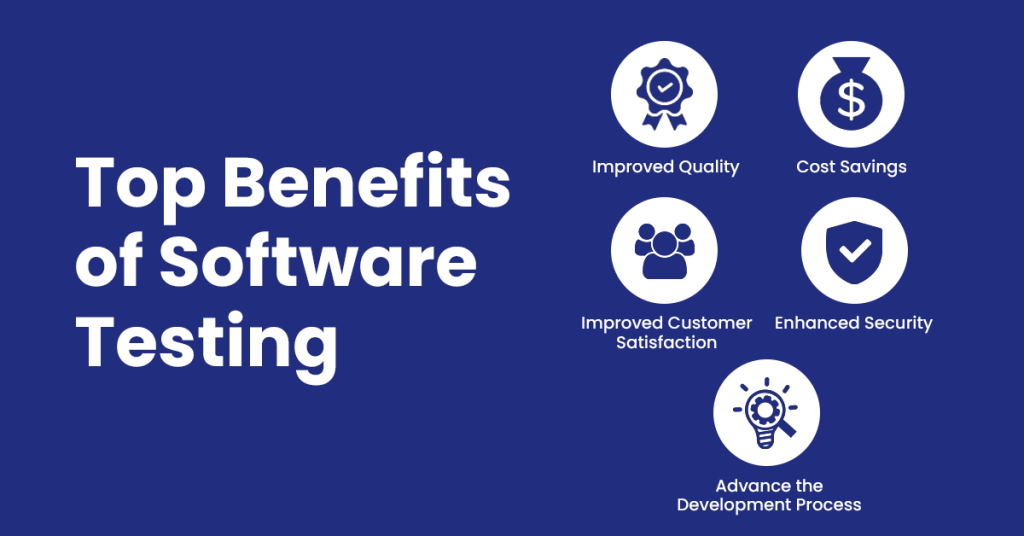
Hi everyone,
This is Ravi and today, I will inform you about software testing. In today’s dynamic software development landscape, ensuring high-quality, reliable, and user-friendly applications is crucial. Software testing is the key process that helps achieve this by verifying that software meets the required standards and functions correctly. This guide overviews software testing, its benefits, various testing methods, key principles, and the roles involved. Whether you’re a professional or new to the field, this guide will help you understand how effective testing improves software quality and reliability.
What Is Software Testing?
Software testing is an essential aspect of the software development process. It involves evaluating and verifying that a software application or system performs as expected and meets the required specifications. The primary goal of software testing is to identify any defects or issues in the software before it is deployed, ensuring a quality product for end-users.
Benefits of Software Testing

The benefits of software testing extend beyond simply finding defects
a. Enhanced Quality: Ensures the software meets defined standards and requirements.
b. Cost Efficiency: Early detection of defects reduces the cost of later-stage corrections.
c. Security Assurance: Identifies vulnerabilities and enhances the security of the application.
d. User Satisfaction: Delivering a reliable, bug-free product improves user experience and trust.
e. Performance Optimization: Ensures the software performs well under expected conditions.
Software Testing Based on Execution Method
Software testing can be categorized based on the method of execution
a. Manual Testing: Involves human testers manually executing test cases without the aid of automation tools. It is crucial for exploratory, usability, and ad-hoc testing.
b. Automated Testing: Utilizes automated tools and scripts to execute test cases, making it effective for repetitive, regression, and performance testing.
Common Test Objects in Software Testing
Several components within the software are tested to ensure they function correctly and meet the specified requirements. These components, or test objects, include.
a. Modules: Individual units or components of the software.
b. User Interfaces (UIs): The visual elements that users interact with.
c. Application Programming Interfaces (APIs): Interfaces that allow different software components to communicate.
d. Databases: Systems for storing and retrieving data.
e. Configurations: Settings and options that customize the software’s behavior.
f. Integration Points: Interfaces between different systems or components.
Understanding the Difference Between Testing and Debugging.

a. Testing is the process of executing a software application to identify any defects or issues. It aims to evaluate whether the software behaves as expected and meets the specified requirements.
b. Debugging involves locating, analyzing, and fixing the underlying causes of defects identified during testing. While testing uncovers problems, debugging resolves them by correcting the code.
Understanding the Difference Between Testing, QA, QC, and QM
a. Testing: Focuses on executing the software to identify defects and ensure it meets requirements.
b. Quality Assurance (QA): A proactive process that ensures the quality of the processes used to develop the software, aiming to prevent defects.
c. Quality Control (QC): Involves inspecting and testing the final product to ensure it meets quality standards and is free of defects.
d. Quality Management (QM): An overarching approach that includes QA and QC, ensuring continuous improvement and adherence to quality standards throughout the development process.
Mistakes, Defects, and Failure.
a. A mistake is a human error that can lead to defects in the software.
b. A defect is a flaw in the software that causes it to behave incorrectly or unexpectedly.
c. A failure occurs when a defect causes the software to deviate from its expected behavior during actual operation.
The Seven Principles of Testing.
a. Testing shows the presence of defects: Testing can reveal defects but cannot guarantee their absence.
b. Exhaustive testing is impossible: Testing all possible scenarios is impractical, so testing focuses on the most critical areas.
c. Early testing: Initiating testing early in the development process helps identify and fix defects sooner.
d. Defect clustering: A small number of modules usually contain the majority of defects, so targeted testing is effective.
e. Pesticide paradox: Repeatedly using the same tests will eventually stop finding new defects, necessitating regular updates to test cases.
f. Testing is context-dependent: Different software applications require different testing strategies.
g. Absence-of-errors fallacy: A defect-free product does not necessarily meet user needs and requirements.
Test Activities and Their Related Work Products
Various activities are involved in the testing process, each producing specific work products.
a. Test Planning: Creating the test strategy and plan documents, outlining the scope, approach, resources, and schedule of the testing activities.
b. Test Design: Designing test cases, test scripts, and test data, used to systematically verify the software’s functionality.
c. Test Implementation: Developing the test cases and setting up the test environment.
d. Test Execution: Running the tests and logging results, identifying any defects discovered during this phase.
e. Test Closure: Creating test summary reports and metrics to evaluate the software’s quality and the effectiveness of the testing process.
Common Test Roles
Two common roles in the testing domain are.
a. Test Analyst: Designs and executes test cases, identifies defects and ensures that the software meets the specified requirements.
b. Test Manager: Oversees the testing team, develops test strategies, coordinates test activities, and ensures that testing aligns with project goals.
Degrees of Independence in Testing
The independence of the testing process can vary, impacting the objectivity and effectiveness of the testing:
a. Self-testing: Developers test their own code, which may introduce bias.
b. Peer review: Colleagues review each other’s work, providing a higher degree of objectivity.
c. Independent testing team: A separate team conducts the testing, offering a more unbiased assessment.
d. External testing: An independent organization performs the testing, ensuring maximum objectivity and thoroughness.
Conclusion
Understanding these foundational concepts and principles is essential for anyone involved in software development and testing. Effective testing not only identifies defects but also ensures that the software meets user and stakeholder needs, leading to higher quality and more reliable software products.
Thanks!